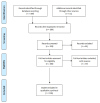Environmental Management of Legionella in Domestic Water Systems: Consolidated and Innovative Approaches for Disinfection Methods and Risk Assessment
- PMID: 33799845
- PMCID: PMC8001549
- DOI: 10.3390/microorganisms9030577
Environmental Management of Legionella in Domestic Water Systems: Consolidated and Innovative Approaches for Disinfection Methods and Risk Assessment
Abstract
Legionella is able to remain in water as free-living planktonic bacteria or to grow within biofilms that adhere to the pipes. It is also able to enter amoebas or to switch into a viable but not culturable (VBNC) state, which contributes to its resistance to harsh conditions and hinders its detection in water. Factors regulating Legionella growth, such as environmental conditions, type and concentration of available organic and inorganic nutrients, presence of protozoa, spatial location of microorganisms, metal plumbing components, and associated corrosion products are important for Legionella survival and growth. Finally, water treatment and distribution conditions may affect each of these factors. A deeper comprehension of Legionella interactions in water distribution systems with the environmental conditions is needed for better control of the colonization. To this purpose, the implementation of water management plans is the main prevention measure against Legionella. A water management program requires coordination among building managers, health care providers, and Public Health professionals. The review reports a comprehensive view of the state of the art and the promising perspectives of both monitoring and disinfection methods against Legionella in water, focusing on the main current challenges concerning the Public Health sector.
Keywords: Legionella; Water Safety Plan; disinfection methods; emerging technologies; water systems.
Conflict of interest statement
The authors declare no conflict of interest.
Figures
References
-
- Centers for Disease Control and Prevention Legionnaires’ Disease associated with potting soil—California, Oregon, and Washington, May–June 2000. MMWR Morb. Mortal. Wkly Rep. 2000;49:777–778. - PubMed
-
- Katz S.M., Hammel J.M. The effect of drying, heat, and pH on the survival of Legionella pneumophila. Ann. Clin. Lab. Sci. 1987;17:150–156. - PubMed
-
- Sehulster L., Chinn R.Y.W., Centers for Disease Control and Prevention Guidelines for environmental infection control in health-care facilities: Recommendations of CDC and the Healthcare Infection Control Practices Advisory Committee. MMWR Morb. Mortal. Wkly Rep. 2003;52:1–42. - PubMed
-
- European Technical Guidelines for the Prevention, Control and Investigation, of Infections Caused by Legionella Species. ECDC. [(accessed on 9 February 2021)];2017 Available online: https://ecdc.europa.eu/sites/portal/files/documents/Legionella%20Guideli.... - PubMed
-
- Ministero Della Salute Linee Guida per la Prevenzione ed il Controllo Della Legionellosi. [(accessed on 9 February 2021)];2015 Available online: http://www.salute.gov.it/portale/documentazione/p6_2_2_1.jsp?id=2362.
Publication types
LinkOut - more resources
Full Text Sources
Other Literature Sources



